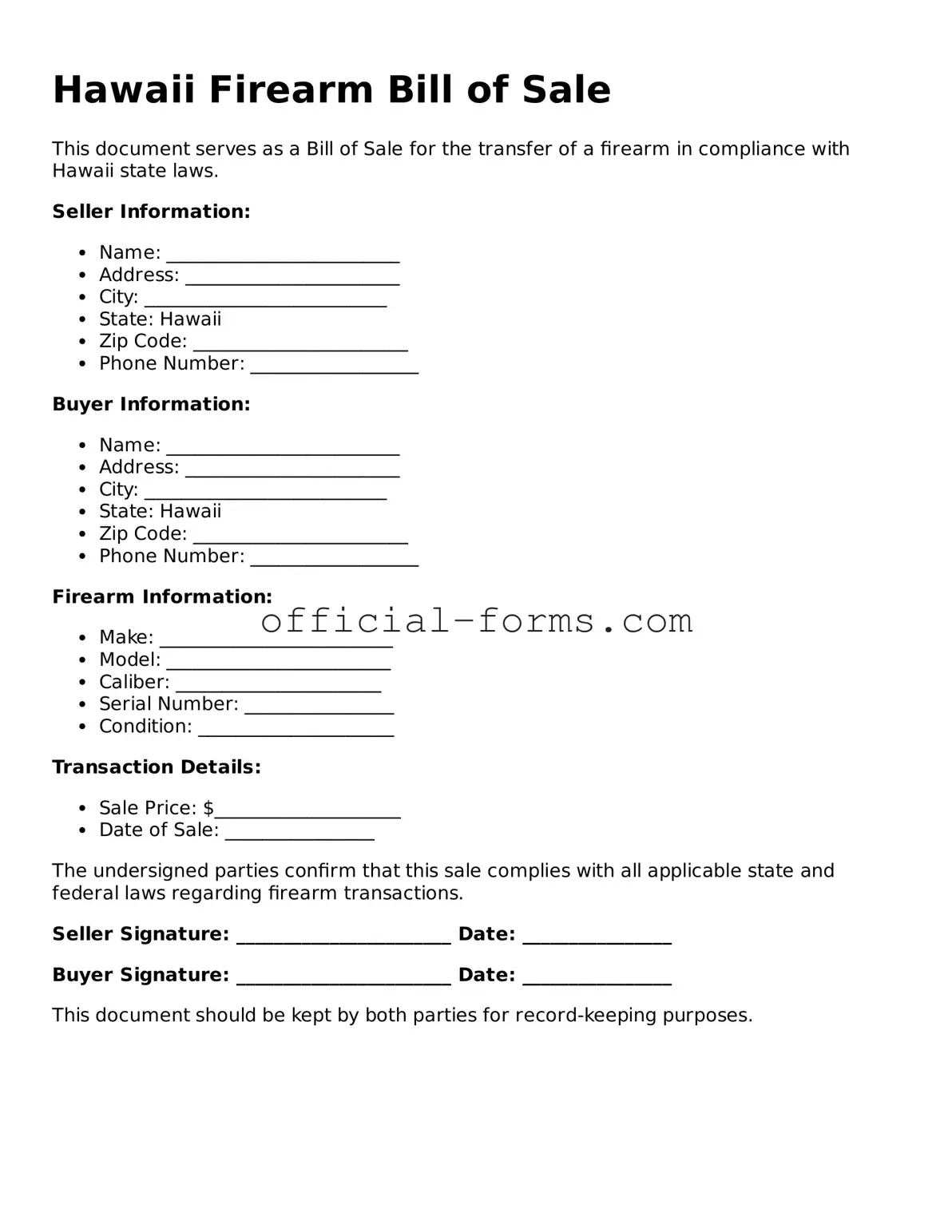When filling out the Hawaii Firearm Bill of Sale form, many individuals make common mistakes that can lead to complications down the line. Understanding these pitfalls is crucial for ensuring a smooth transaction. One frequent error is failing to include all necessary information. Buyers and sellers must provide complete details such as names, addresses, and firearm specifics. Omitting even one piece of information can render the document incomplete.
Another mistake is not using the correct date. The date of the transaction is vital and should reflect when the sale actually took place. If the date is inaccurate, it can lead to confusion regarding ownership and the legality of the sale. Always double-check the date before finalizing the form.
Some individuals neglect to have the form signed by both parties. A signature is not just a formality; it serves as a legal acknowledgment of the transaction. Without signatures, the document may not hold up in a legal context, which could create issues for both the buyer and the seller.
Additionally, failing to keep a copy of the completed Bill of Sale is a mistake that can have serious consequences. Both parties should retain a copy for their records. This documentation can be invaluable in case of future disputes or questions about the transaction.
People often overlook the importance of verifying the buyer's eligibility. In Hawaii, there are specific laws regarding who can purchase firearms. Ensuring that the buyer meets all legal requirements is essential to avoid any legal ramifications later on.
Lastly, some individuals rush through the process without reading the entire form. Each section of the Bill of Sale has its purpose, and understanding it can prevent misunderstandings. Taking the time to read carefully ensures that all information is accurate and that both parties are protected.
